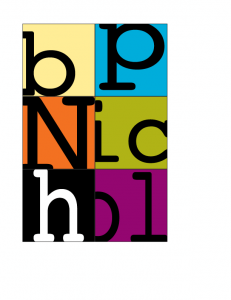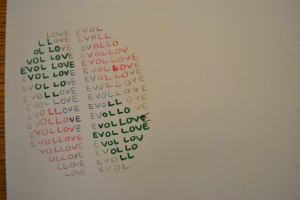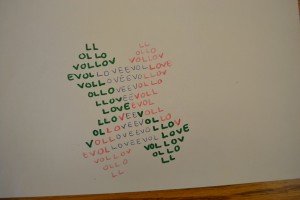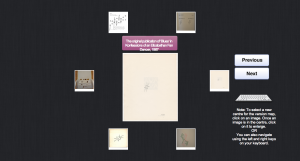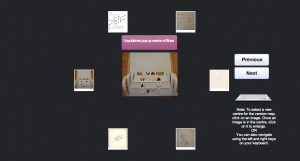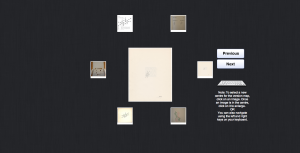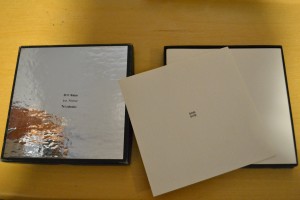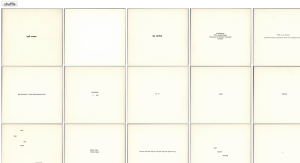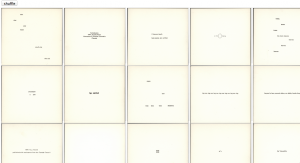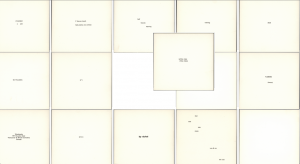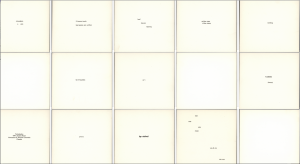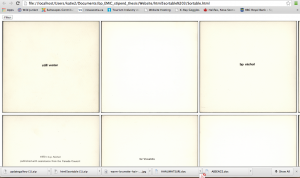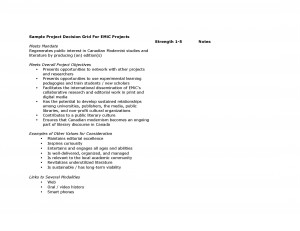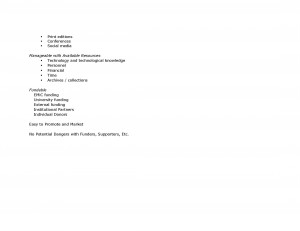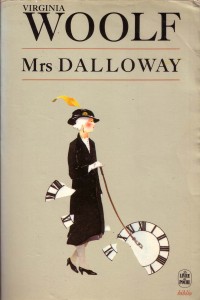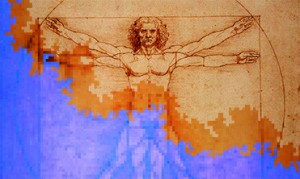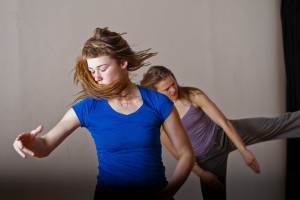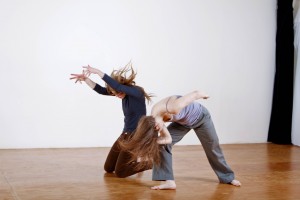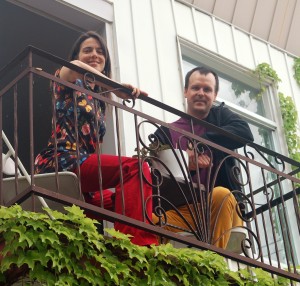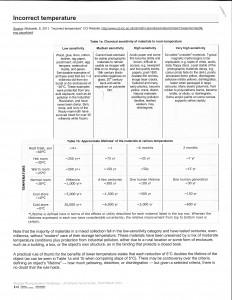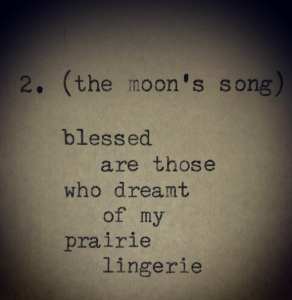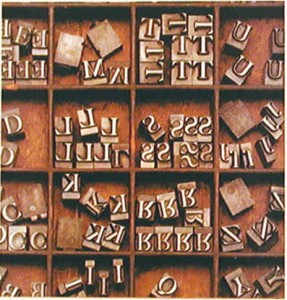Archives
Author Archive
November 11, 2014
A Thank You, A Confession, and a Digital Edition Prototype
I would like to start by thanking everyone for their cooperation over the past 14 months, during which time I pestered many of you to contribute to this blog and share updates on your EMiC projects. I have completed my term as social media intern for EMiC, and it has been a pleasure to work with all of you and see the wealth of exciting projects and valuable feedback that have been featured on EMiC’s social media outlets.
The confession part of this post is that I have not shared anything about my own (somewhat stalled) EMiC project during my time coordinating the blog. I started a digital edition project in my MA degree in 2012-13 with the hopes of having a completed website (bpnicholproject.ca) by the time I crossed the stage. The project was probably more ambitious than practical for a three-semester timeline, considering I began it with no clear idea of how I was going to get my ideas online. After realizing it would take more than a few Ladies Learning Code classes to create an interactive edition of selected bpNichol works myself, I sent out a call to Computer Science students at Dalhousie to see who I could hire as a web designer. The grad student I worked with was talented and capable, but also extremely busy with his own studies. Between our busy schedules and interdisciplinary communication difficulties (I may have learned helpful html, CSS, and JavaScript terms, but explaining the importance of bibliographic codes to a web designer is another thing), the project had a slow start. Once he finally had some prototypes for me, his server was hacked, the prototypes were lost, and he had to start over again. After redoing the pages he had previously created, he sent me all the necessary files for my own safe-keeping and politely admitted that he was too busy with his degree to continue.
Discouraged by my lack of finished product, I never really reported on these prototypes. With a full-time non-academic job, my project has been sitting on the back burner for a year and the guilt of not completing it prompted me to write posts about resources and cross-disciplinary tools but not actually write about my own project. So here is a long overdue post about where I ended up with two of the components of my digital edition, written with the hope that summarizing things “out loud” online will be the first step to setting things in motion once more.
(Pictured above is my homepage graphic that is still homeless.)
One of my main intentions with creating a digital edition (in the form of a website) of selected bpNichol works is to preserve bibliographic characteristics and the materiality of texts that are so integral to Nichol’s concrete poetry. bp often created many versions of a single work, so I also wanted to incorporate genetic criticism into my approach. Since a bibliographic editing orientation does not allow any textual features to be overlooked, genetic analyses that adhere to a bibliographic orientation must avoid creating eclectic texts, which are texts produced by collating features from all existing versions and emended to produce a copy text that includes the “best” of these features. Eclectic texts are highly impractical for concrete poetry because there is no clear way of deciding which margin width or font size is the “best” since each of these material characteristics is dependent and intrinsically linked to individual versions, their media, and the contexts of their production. In other words, each version of one of Nichol’s poems is informed by the material characteristics of all preceding versions and the significance attached to those characteristics.
While genetic criticism best directs the reader’s study of Nichol’s poems, the standard form of annotations used for this critical orientation, which refers to spelling and word use variations in a coded list ordered by line number, does not provide adequate representation on the subtle variances in bibliographic characteristics. Since Nichol includes bibliographic codes as part of his poems’ aesthetic dimensions, the materiality of his work plays a major part in the movement of his writing. Many of his poems do not vary in content between versions, but their aesthetics change due to alterations in bibliographic code.
My digital edition resists linear presentation and integrates apparatus with content by using a dynamic template to display scanned images of all versions of a chosen poem. The user can move from image to image by selecting thumbnails from a wheel or cycling through images using the arrow keys or ‘previous’ and ‘next’ buttons. The selected image moves to the centre of the wheel, allowing an image that had previously assumed the position of textual apparatus for the centre text to become the copy text of the edition. This template allows the genetic portion of my digital edition to function as a sort of version map, where the eye can move from one version to the next in an image landscape, making visual connections in all directions. The genetic narrative of the writing and production processes that can be inferred from the differences between versions can be picked up and left off at any point, thereby de-emphasizing initial intentions and end results and instead offering readers the opportunity to perceive a work from the vantage point of any one of the texts that comprise that single work. Each image acts as an annotation to the rest, providing information about textual variants just as traditional genetic endnotes would while allowing each image to function as both copy text and textual apparatus.
This screenshot shows the basic design of the version map.
This screen shot shows the version gallery after another image has been selected as the centre image.
The scanned images maintain the visual bibliographic codes of the original texts, such as font, paper colour, spacing, and margins. However, they do lose other bibliographic characteristics such as paper weight and texture, context provided by format (i.e. whether the poem is printed in a book, journal, or non-codex format), and context provided by front and back matter and placement amongst other content. Another difficulty I have encountered is maintaining page size. The web designer I worked with last year was unable to create a gallery of images that works in the way I just described while also keeping the original page sizes and still making everything visible on a standard computer screen. Even the irregularity between the shapes and sizes of scanned images causes problems of overlap when certain images are in the middle of the wheel (as shown in the below screen shot). My intentions of preserving bibliographic codes in every way possible don’t jive well with web design conventions that lean toward uniform image sizes and shapes.
I have also debated how much to provide for textual annotations. The below screenshot shows the images with no textual annotation for the centre image, with only the other images acting as genetic annotations. However, I feel that some traditional textual annotation is necessary to provide context.
The other section of the digital edition I had mapped out that I worked on with a web designer was a simple interactive section involving the text Still Water.
With traditional books, reader interaction is limited to turning the pages and reading the text, controlling the speed of reading but not much more. Readers could choose to read the pages out of order, but not without being aware of the definite sequence that is imposed upon the text by its bound format and page numbers. Nichol expanded these options first in his print material with works such as Still Water, which consists of twenty-eight cards in a box and could be shuffled and re-sequenced. In my digital-edition prototype of selected Nichol works, I focus on the potential to translate some of the original material characteristics of Still Water, particularly those that encourage interaction between the text and the reader, to a digital medium by making the collection available online.
This miniature archive of concrete poems printed on twenty-eight square cards in a box is difficult to find in its original form, and anthologies and critical editions that include excerpts from it lose key elements of the reader’s relationship with the text by re-printing the excerpts in a traditional codex format. Since Nichol did not number any of the cards, Still Water is not subject to any particular order, nor is it confined to a one-page-at-a-time presentation since the “pages” are not bound together. These features allow the reader to step in as editor of the text, arranging and re-arranging the poems. With no available record of the original order, readers cannot even be sure that the shape and flow of the text has not already been partially determined by previous readers. While there are cards with title, publication information, and dedication, the identities of text and paratext are blurred by such poems as “the blue pen i write these poems with,” which could be a stand-alone piece, a supplement to preceding or subsequent poems, or an author’s note about the production history of the text. Similarly, there are also three blank cards, which bear no marks to designate them as front or back matter, and which could be inserted throughout the body of the text in order to create pauses or indicate sections.
The interpretation of Still Water not only varies with its arrangement but also differs based on whether the reader views the work as a collection of individual poems or as a holistic whole comprised of parts with individual sub-narratives. The lack of binding and the perfectly square shape of the cards allow the reader to arrange them as a scene, in a four-by-seven rectangle, a two-by-fourteen column or any one of numerous irregular shapes, with juxtapositions and connections created by placing cards edge to edge. The scene can be read top-to-bottom, left-to-right, or as one large poem that draws the eye to its various quadrants and single cells based on the weight of words, groups of words, or absence of words.
Still Water re-invents the book as a collection of pages that allow content to be interpreted based on the relation of each page to all the others. With Still Water’s remediation of the book as a series of unbound cards, the authority that the book holds as a medium that directs the reader from the beginning to the end in a linear progression is transferred to the reader who can now direct the narrative flow of the text.
While at Lori Emerson’s Media Archaeology Lab at the University of Colorado in Boulder, I created five short programs for five different Still Water poems on the Apple IIe using Applesoft BASIC language (see above image). The programs were saved to a 5-¼-inch floppy and can be recalled by typing the commands LOAD STILLWATER1 (or STILLWATER2, STILLWATER3, etc.) and RUN. Hypothetically, if all twenty-eight units of content from the twenty-eight cards of Still Water were created as programs in BASIC programming language and saved to a floppy disk, any user could call up the “pages” of Still Water in any order that they choose. This concept is a good basis for what can be done with more complex programming language today. Using JavaScript and jQuery, it is possible to shuffle the Still Water cards. Readers can view the cards in one order and then, with a simple click, rearrange the order and re-view the content in any one of almost infinite permutations. Unlike the programs created with Applesoft BASIC, today’s programming languages also allow all twenty-eight cards to be visualized at once and dragged and dropped into different arrangements. Also, the original font, page shape, and paper colour can be maintained through the use of scanned images.
Here is a screen shot of the Still Water grid created by the web designer. One issue is that all 28 cards cannot be visible at once on a standard computer screen.
After hitting the “shuffle” or “filter” button, the cards will randomly re-order.
The reader/user can also click on individual “pages” and drag and drop them to reorder the poems as they wish.
I was generally really pleased with how this interactive version of Still Water turned out, although I admit the text can be a bit hard to read. The web designer created another html file in which the images were larger, but I find that it loses some effect as only a few images are visible in the web browser at a time.
Since the screen shots don’t necessarily illustrate the above concepts as well as I would like them to, I had hoped to be able to attach html files for you to open in your browsers, but that doesn’t seem to be possible on Word Press. If anyone would like to test out either of the components of my digital edition that I have featured here, I would be happy to email html files, and I am always happy to receive feedback. I hope to have more to share in the future as I continue to work on this project in my spare time.
October 24, 2014
Friday Roundup of DH Events & Deadlines
CSDH/SCHN Outstanding Achievement Award for Computing in the Arts and Humanities
Know a Canadian researcher or a researcher at a Canadian institution who has made a significant contribution, over an extended career, to computing in the arts and humanities? With your nomination, they could be receive the CSDH/SCHN Outstanding Achievement Award for Computing in the Arts and Humanities and be invited to address the society in a plenary session of the annual conference at Congress, which will be held in Ottawa in the spring of 2015.
For a list of previous recipients, see http://csdh-schn.org/activities-activites/outstanding-awards-prix/
Nominations of up to 500 words must be submitted by October 31, 2014. Only current members of CSDH/SCHN are eligible to submit nominations. Nominations must be sent by email to the chair of the CSDH/SCHN Awards Committee (dean.irvine@dal.ca).
IMAGINATIONS, 46th Annual Conference of the College English Association
The College English Association, a gathering of scholar-teachers in English studies, will have its annual conference in Indianapolis, Indiana, March 26-28, 2015.
The special panel chair for Digital Humanities welcomes proposals for papers and panels addressing the following topics:
- DH projects (digital collections/archives, digital editions, interactive maps, 3D models, etc.)
- DH research tools (text analysis, visualization, GIS mapping, etc.)
- DH pedagogy (teaching methodologies, curriculum development, project collaboration, etc.)
- DH centers (supporting research, consulting services, teaching faculty/students, etc.)
- Digital Project Management
- Data Curation
- The Future of DH
Please submit your paper title and abstract (200-500 words) to http://cea-web.org/ by 1 November 2014.
ELO Conference: The End(s) of Electronic Literature
(For anyone who happens to be in Norway August 5-7, 2015)
The 2015 Electronic Literature Organization conference and festival will take place in Bergen, Norway. This year’s theme encompasses the following topics: what comes after electronic literature, what purposes do works of electronic literature serve, international practices in electronic literature, electronic literature and other disciplines, and digital reading experiences made for children.
The deadline for submissions of research, workshop, and art proposals is December 15, 2014. More information can be found at http://conference.eliterature.org/.
October 7, 2014
Project Decision Making
It is one month into the academic year, and, even as someone who is working outside of academia, I’m getting that nagging feeling that October is here, the transition-month of September has passed, and it is time to put some momentum behind projects that were dormant over the summer or ideas that have been waiting for the new season in order to materialize.
I received some useful resources from a management and governance workshop for non-profits, including a sample decision-making grid. The grid lists qualities and objectives that a project should fulfill in keeping with the organization’s mandate, and potential projects can be rated from one to five for how well they meet each requirement in order to benefit the overall organization. While there is no set score that a potential project should achieve, the grid is a useful tool for thinking through a project’s feasibility and projected outcomes. It is definitely a tool that I will apply to my bpNichol digital edition project (which is broken into three sub-projects), to see whether or not I should change my approach, especially after meeting certain obstacles during my MA while trying to design a website. The grid could easily be tailored to determine if an editing project is a good fit for EMiC, if a certain editorial approach is appropriate for an individual project, or even if a particular work should be included in a collection based on how it contributes to the objectives of the finished edition.
A sample decision-making grid for potential EMiC projects is pictured below and also attached as a Sample Project Decision Grid PDF.
September 3, 2014
CFP: Virginia Woolf in the Modern Machine Age
CFP: Virginia Woolf Miscellany
Issue #88, Fall 2015: Virginia Woolf in the Modern Machine Age
The Virginia Woolf Miscellany invites submissions of papers that address the role of everyday machines in the life and/or works of Virginia Woolf. From typewriters and telephones to gramophones and the wireless; from motor-cars and combat aeroplanes to trains and department store elevators; from cameras and film projectors to ranges and hot water tanks, the commonplace technologies of the modern machine age leave their trace on Bloomsbury. To what extent are these and other machines represented, hidden, implied, avoided, embraced, or questioned by Woolf and her circle and characters? What is the place of labour and mass production, or the role of the handmade or bespoke object, in the context of such technologies and the desires with which they are implicated? What are the ramifications for the individual’s everyday navigation of modernity, domesticity, and/or community? Alternatively, what is the influence of everyday technologies in our own interactions with Woolf and her writings? Please submit papers of no more than 2500 words to Ann Martin (ann.martin@usask.ca) by 31 March 2015.
August 20, 2014
Upcoming CFPs and DH Events
LIBERAL ARTS SCHOLARSHIP AND TECHNOLOGY SUMMIT
Penn State is hosting its annual Liberal Arts Scholarship and Technology Summit (LASTS) next month, an event that brings together liberal arts faculty, graduate students, librarians and education technologists to share and explore digital pedagogy and scholarship. Co-sponsored by the College of the Liberal Arts and the University Libraries, the event includes workshops, presentations, breakout sessions, and featured keynote speakers.
LASTS will take place on Friday, September 12 and Saturday, September 13 in the Paterno Library’s Foster Auditorium.
If you would like to participate, please see our current call: http://sites.psu.edu/lasts/present/
BIRDS-OF-A-FEATHER GATHERING, SYDNEY, AUSTRALIA
Call for Proposals
Research Foundations for Understanding Books and Reading in the Digital Age: Emerging Reading, Writing, and Research Practices
An INKE-hosted Birds-of-a-Feather Gathering
8 December 2014 | State Library of New South Wales | Sydney, Australia
Proposals due: 15 September 2014
Digital technology is fundamentally altering the way we relate to writing, reading, and the human record itself. The pace of that change has created a gap between core social/cultural practices that depend on stable reading and writing environments and the new kinds of digital artefacts – electronic books being just one type of many – that must sustain those practices now and into the future.
This gathering explores research foundations pertinent to understanding new practices and emerging media, specifically focusing on work in textual and extra-textual method, leading toward:
· theorizing the transmission of culture in pre- and post-electronic media;
· documenting the facets of how people experience information as readers and writers;
· designing new kinds of interfaces and artifacts that afford new reading abilities;
· conceptualizing the issues necessary to provide information to these new reading and communicative environments;
· reflecting on interdisciplinary team research strategies pertinent to work in the area;
· and much more.
Presentations addressing these and other issues in relation to emerging and/or transforming (digital) infrastructures, in regional, national, and international contexts are welcome.
We invite paper proposals that address these and other issues pertinent to research in the area. Proposals should contain a title, an abstract (of approximately 250 words, plus list of works cited), and the names, affiliations, and website URLs of presenters; fuller papers will be solicited after acceptance of proposals, for circulation in advance of the gathering to registered participants. We are pleased to welcome proposals in all languages in which our community works, and note that the chief working language of past gatherings has been English. Please send proposals on or before 15 September 2014 to Alyssa Arbuckle at alyssaarbuckle@gmail.com.
CALL FOR CHAPTERS: READING MODERNISM WITH MACHINES
From data mining and visualization to mapping and topic modeling and beyond, digitally enhanced studies of literature and culture offer a series of computational methodologies for use in literary and cultural criticism. Using these approaches, scholars can ask new questions of literature and culture, while also intervening in existing debates. And with the publication of a variety of anthologies, handbooks, and treatises addressing the Digital Humanities in general, we now have the opportunity to focus attention on specific periods and movements in literary and cultural history. Reading Modernism with Machines aims to bring together the most rigorous and exciting modernist criticism to have been conducted using computers.
Each submission should offer a case study of modernist literary and cultural analysis conducted using a computational approach. While methodologies should be outlined, the majority of each submission should be reserved for humanistic discussions, which should be based on, or supplemented by, any electronic analyses. Submissions will be judged based on 1) the innovation and sophistication of the digital tools used in the analysis, 2) the essay’s broader impact on modernist studies, and 3) the degree to which computational analysis and literary/cultural interpretation merge cohesively.
Submissions: Initial proposals of ~500 words are due by September 31st, 2014
(Where appropriate, sample graphics, tables, tools, or datasets may also be submitted with proposal.)
Final submissions of ~6,000 – 8,000 words are due by January 31st, 2015
Submissions should be sent to James O’Sullivan (jco12@psu.edu) and Shawna Ross (smross3@asu.edu)
NEW PROJECT: GRADUATE TRAINING IN THE 21ST CENTURY
MediaCommons and #Alt-Academy have just launched a new project, Graduate Training in the 21st Century, which focuses on the challenges, the potential, and the pragmatics of the graduate school years that precede the move into one of many academies.
Its editors, Melissa Dalgleish (York University) and Daniel Powell (King’s College London and University of Victoria), are especially interested in the changes to graduate education that are already taking place, or that should take place, in response to the proliferation of post-PhD pathways.
The project’s front page can be found here: http://mediacommons.futureofthebook.org/alt-ac/cluster/graduate-training-21st-century, while the longer introduction can be seen here: http://mediacommons.futureofthebook.org/alt-ac/pieces/building-alternative-academy.
We are seeking contributors to our first cluster of essays, entitled “Beyond the Proto-Monograph: New Models for the Dissertation.” This cluster seeks to explore how the prototypical graduate project in the humanities—the dissertation—is changing in the face of the digital turn, shifting job markets, and new visions for the academy. The call for papers can be found here: http://mediacommons.futureofthebook.org/alt-ac/pieces/call-papers-beyond-proto-monograph-new-models-dissertation
We also welcome proposals or contributions on any aspect of graduate training, higher education reform, and post-degree careers, especially from current graduate students. We can be reached at gradtraining21c@gmail.com.
July 11, 2014
Interdisciplinary Project Brings P.K. Page Poems to the Stage
Scott Thomson, a composer and trombonist in Montreal, has written a suite of songs based on poems by P.K. Page that will be performed in collaboration with singer and dance artist Susanna Hood.
The group of compositions is titled The Muted Note: Songs Based on Poems by P.K. Page and was written by Scott in 2011-12. The suite of eleven songs has already been performed by Susanna and Scott in a variety of contexts, as well as released on CD in October 2013. Scott and Susanna will be promoting this CD on their upcoming tour, which has a full schedule of duo performances slotted for this autumn. The coast-to-coast tour includes more than 30 performances in nine provinces starting in September and running into November.
In addition to performances of The Muted Note, Scott and Susanna are leading discussions and workshops and looking to collaborate with interested academics. These supplementary tour activities include practice-based workshops on improvisation and setting poetry to music, as well as discussions, artist-talks, and seminars on the interdisciplinary nature of the work and its literary context.
Scott has already spoken to EMiC members Zailig Pollock, Margaret Steffler, and Sandra Djwa, as well as Ajay Heble of the Improvisation, Community and Social Practice project (who works in partnership with EMiC co-applicant Alan Filewod) about collaborating for discussions and onstage conversations. Scott and Susanna are open to other EMiC members and academics who would be interested in participating in tour activities.
Dancers Ellen Furey and Alanna Kraaijeveld (photo credit: Alejandro De Leon)
Susanna, known for her excellent vocal and dance improvisations, has created choreography for the suite in order to produce an expanded stage work of The Muted Note that she performs with three other dancers, accompanied with live music by Montreal-based quintet The Disguises. The resulting show combines composed and improvised material in both music and dance, all the time keeping Page’s poetry as the central focus. The first full stage work run of performances (with all four dancers and five musicians) will be at the Citadel Theatre in Toronto, September 5-7. The next run of shows will be in Montreal at Studio Hydro-Québec, Monument National, October 2-5 as a co-presentation by Tangente and L’Off Festival de Jazz.
In corresponding with Scott via email, I learned that his creative process is influenced by American composer Steve Lacy, who set poetry to music in compositions that allowed for extension and variation through improvisation.
“Like the music, the dances are composed so that they can be extended through improvisation and, in this way, The Muted Note depends on the creative input of the entire ensemble in performance,” says Scott.
Photo credit: Alejandro De Leon
Scott also shares his reasoning for choosing Page’s poems as the focus of his performance project:
“In my search for suitable texts to do such work, I revisited P.K. Page, whom I’d read and enjoyed as an undergraduate. Returning to her verse after many years, I was struck by the beautifully wrought craft it reflects; by her light touch working (playing) with metre, rhyme, and form; and by the singing quality of her ‘galvanized language,’ as my friend, music critic Stuart Broomer, puts it. Moreover, I was taken by the fact that little in Page’s verse is confessional, autobiographical, or sentimental. It is fundamentally about the world around her, and depends on deep and different kinds of attention to its details and nuances. Her self-expression resonates primarily as the residue of her loving elucidation of things, people, and states of being that surround her –– a beautifully selfless and generous offering.”
While Scott admits that he had to choose Page’s shorter poems for practical reasons, he also selected pieces that struck him as already having a song-like feel. He speaks further on his selection process and pairing music with Page’s words:
“While I did not seek to illustrate thematic or semantic aspects of the texts in too overt a way, a listener may trace the route of a subterranean rodent through the ascending and descending melody line of ‘The Mole,’ which accelerates with the tempo change that the poem’s syntax and lineation suggest. And I could not resist turning “Blue” into a blues, albeit an ironic one about the unequivocally ‘first-world’ problem of Page’s inability to represent the colour of flowers in language. Surely, ‘Blue’ is the first song in history of the blues to contain the word ‘delphinium!’”
Wishing to keep the texts at the centre of his suite, Scott crafted music that enhanced the text’s musical qualities both functionally and poetically.
“Just as Page’s poetry is not primarily about the poet herself, I sought to write music that is not so much a vehicle for my own self-expression, and which could be foremost about the verse it sets,” he says. “My main goal is to animate and activate the texts in ways that underscore the timeless connections between poetry, song, and dance.”
“The Muted Note is a Poetry + Music + Dance show,” explains Scott, “and, from what we know about P.K. Page’s discipline-defying, wide-ranging imagination, she would surely have appreciated the spirit of our creative inquiry.”
More information, including the full tour schedule, can be found at www.scottthomson.ca. You can also find Susanna and Scott’s recording of The Muted Note suite for sale here and view a short documentary about the performance here.
Susanna Hood and Scott Thomson (photo credit: Joane Hétu)
June 12, 2014
DHSI Word Cloud: The future is collaborative
This word cloud was created by submitting all of the EMiC blog posts about DHSI 2014 to a program that generates a visualization of the most commonly used words and phrases. Words that encourage working together, such as “community,” “cluster,” “collaborative,” “together,” and “social,” are a prominent theme in the cloud, with “Future Around Collaborative” acting as a fitting subtitle to the central words “Learning Course DHSI.” I also enjoy how the cloud arrangement created the term “Working Digital People.” Hopefully DHSI 2014 left everyone feeling like well-oiled working digital (humanities) people. The blog certainly indicates that everyone is feeling better equipped to create and motivated to co-create with others. Please keep sharing– the blog activity has been excellent these past ten days and the posts are encouraging and stimulating. Thanks to everyone for keeping the conversation going!
May 23, 2014
Four Web Finds for Digital Humanists
Instead of sharing four separate Facebook or Twitter posts, I thought I would collect some recent discoveries of materials that might be of interest to the EMiC community and put them into one blog post. So here is my Friday sampler:
I will be writing more soon on the audio edition of Sepass Poems as I continue to correspond with Ann Mohs of Longhouse Publishing prior to the official launch. For now, check out the audio glossary that has been created to accompany the audio edition. It is a great reminder that paratext (or in this case perhaps a term like paranarrative would be more appropriate) should reflect the medium of the principal text or narrative. It seems fitting that the glossary for orally presented poems is an oral glossary, returning to the tradition of learning new terminology through listening and repetition.
Here is the link to the glossary: http://www.longhousepublishing.com/book-Sepass-Poems-Glossary.htm
For those collecting audio and video in its original form (i.e. magnetic media: floppy discs, cassette tapes, etc.), the Canadian Conservation Institute (CCI) has published S. Michalski’s “Incorrect Temperature” chart as a guide to how long different objects will last at different temperatures based on their vulnerability. The highest sensitivity group includes magnetic media and colour photographs, and various other types of paper (for those of us with large book collections) can be found under the other sensitivity groups. Technically I didn’t discover this online, but the workshop organizer who passed it on during a museum workshop took it from the CCI website. If you’re curious to know how long that copy of bpNichol’s First Screening is going to last in your basement, or what kind of decay rate your collection of rare chapbooks and Modernist periodicals have, this document is worth a glance. If nothing else, it is a reminder of why digitization is necessary for preserving literary works that have a finite lifespan in their original physical form.
For anyone in Halifax who is working on an edition and wants to tackle some basic graphic design work on their own, check out this Intro to Photoshop course offered by Ladies Learning Code (the organization is targeted at women, but men can take the courses, too). I have taken two Ladies Learning Code courses in the past (one for HTML and CSS, and one for JavaScript) and they were both very informative, hands-on, and well-taught. Plus they are very affordable! A Canada-wide organization, Ladies Learning Code offers workshops in many different cities, so sign up for their email newsletter if you want to know of relevant coding, Adobe, and Microsoft Office courses that are coming your way.
This last find is not as directly related to Modernism or editing, but it has filled my head with possibilities. Poet Adrian Sobol has created a digital chapbook by self-publishing poems on Instagram under the account “Selfies with the Moon.” Check it out here.
After thinking about digital strategies for engaging an audience with tools like social media, I am in love with Sobol’s idea! #crowdsourcing #instaeditions #hashtagannotations ? #bpNicholOnInstagram ?? It certainly is something to think about.
May 17, 2014
Tools from Post-Ac / Alt-Ac Careers: The Digital Engagement Framework
Since finishing my MA and deciding to pursue a career outside academia instead of a PhD, I have encountered plenty of discussions and discovered several resources that could fit just as well within academic projects in the humanities. As a Museum and Communications Coordinator for a non-profit heritage organization, issues surrounding collecting, archiving, and organizing information, cultural objects, and historical narratives are always present in my work. Many of these issues are related to how we can best engage an audience in these materials and narratives using digital platforms. This is the first of a few posts that I hope to write in order to share tools from my work outside academia that I feel would be useful to the EMiC community. Anyone else who has ideas and resources to share that bridge the divide between academia and post-ac / alt-ac careers should feel encouraged to do the same.
I attended two workshops at the Canadian Museums Association conference in Toronto this April, one of which was about incorporating digital strategies into project planning. The workshop was led by Jasper Visser, who travels the world to give talks on The Digital Engagement Framework. This framework is a tool that helps you decide which digital technologies will best achieve your goal and engage people in your project. The framework encourages users to map out who their audience is, what they can offer this audience, and what the audience can offer in return. The next steps involve planning how digital tools can be used to facilitate a mutually beneficial relationship between the project organizers and their audience. Visser has created an entire book on the topic that includes worksheets and case studies. It can be downloaded (along with the worksheet pictured above) from the digital engagement framework website.
I found the tool very useful for streamlining ideas about crowd-sourced projects that depend on audience contributions. Visser’s workshop asked participants to think past the initial engagement of an audience and also create a strategy that will retain an audience and cause an audience to be invested in a project. Since invested audiences need to feel that they are adding value to a project and that their efforts are recognized, the workshop included ample discussion on social media and how it can support crowd-sourced projects. The workshop also forced me to realize that, since only about 1 out of every 100 people remain interested in a project after initial engagement, targeting an audience 100 times the size of my ideal audience is a necessary first step in obtaining the participation levels I would like to achieve.
All in all, I think this resource is a useful tool for anyone planning a digital project that will use crowd-sourcing to obtain materials (such as an online edition that will ask for annotations from readers), for anyone who has a non-digital project that will require digital tools to engage with an audience (such as a textual edition that will be promoted through social media and other online platforms), or simply for anyone who has a project in mind and wants to take the first steps in considering how to get people interested in it– specifically in a world where digital interactions are not only the norm, but a necessity for generating a large and invested readership.
May 12, 2014
TEMiC in Review: Transitions and Inspirations
Continuing with posts featuring feedback from TEMiC, Katrina Anderson— an MA student at Simon Fraser University– writes about why she recommends the training event to other humanities students:
Looking back on my experiences at last year’s Textual Editing and Modernism in Canada (TEMiC) summer institute, I have realized what an excellent training opportunity it was for someone just about to begin her first year as an MA student. In many ways, the coursework, seminar discussions, and afternoon workshops prepared me for the transition from undergraduate to graduate studies. The assigned readings that corresponded with the theme “Editing Modernism On and Off the Page” anticipated many of the readings that I would encounter in my first graduate seminars. These seminars, which focused on Print Culture and Digital Romanticism, integrated many of the same issues that were raised during the week at TEMiC. Having already discussed digital and textual editing practices with students and scholars in the EMiC community, I was able to speak and write about them with confidence in my graduate coursework. It was especially helpful to have been introduced to the work of John Bryant, whose fluid-text approach now somehow seems to make its way into every essay that I write.
Aside from providing a solid background in readings on textual and digital editorial theory, the summer institute also helped me to find my current research project. I am hoping to develop an edition of the short stories of Katherine Hale, and my experiences at TEMiC are largely responsible for the conceptualization of this project. My interest in Hale as an author comes out of the research that I did in preparation for the summer institute, and without the knowledge that I acquired at TEMiC (as well as the introduction to digitization methods I received at Digital Editing and Modernism in Canada [DEMiC] /DHSI in Victoria earlier in the summer) I would not have considered a digital edition as something that someone with a humanities background and limited technical skills would be able to develop. I know the almost daunting amount of work that goes into such a project, however what I learned at TEMiC and DEMiC. DEMiC/DHSI gave me the vocabulary and framework I needed to see this as a task someone with my level of training would be able to pursue.
For me, some of the most memorable moments from TEMiC 2013 came out of the afternoon workshops and guest speaker sessions. Getting hands-on experience with printmaking techniques such as screen and letterpress printing was a particular favourite. Listening to scholars speak about their current research was fascinating, and provided a perspective on the diverse array of work being done in digital humanities scholarship. And, of course, being in the audience as Frank Davey, Fred Wah, Sharon Thesen, Daphne Marlatt, and George Bowering read and discussed their works was a real treat.
I feel lucky to have been able to participate in this poetic and editorial event. I am especially grateful to the EMiC community, in particular to Karis Shearer and Dean Irvine, for organizing this training opportunity, and for providing a memorable send-off from my hometown as I made the move to pursue my MA degree.
